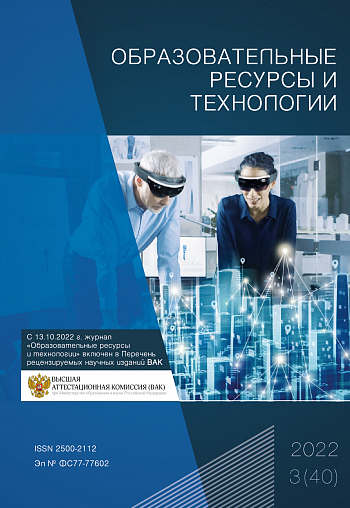Release: 2022-3 (40)

Rubrics:
Educational environment
Content:
DOI: 10.21777/2500-2112-2022-3-7-14
Keywords: prevention of the use of psychoactive substances, educational environment self-perfecting, psychological characteristics of minors prone to the use of psychoactive substances
Annotation: The article deals with the problem of preventing the use of psychoactive substances by students in the educational environment. The authors consider the main approaches to the organization of psychoprophylactic measures in the educational environment, aimed at strengthening the protective factors that prevent the start of use and reduce the risk factors for the forming of dependence on psychoactive substances among minors. The theoretical review presented in the article allows us to consider in detail the main types of minors who are prone to the use of psychoactive substances. The authors describe an empirical study in which 120 respondents of adolescent and juvenile ages from different federal districts of the Russian Federation took part. As a result of the study, it can be concluded that for each of these groups it is necessary to create a special system of psychoprophylactic measures. The differences will consist in the strategy of preventive measures, depending on the typology of the propensity to use psychoactive substances. The main practical significance of the study consists in compiling a psychological portrait of minors with a tendency to use psychoactive substances, which will make the latter a target of psychoprophylactic measures.
DIGITAL TRANSFORMATION AS A TREND IN THE DEVELOPMENT OF HIGHER EDUCATION
DOI: 10.21777/2500-2112-2022-3-15-20
Keywords: higher education, digital transformation, digital maturity, “end-to-end technologies”, digital tools
Annotation: In modern society, digital technologies are an integral element of every person’s life, they are not only a tool for learning about the world, but also the very environment of existence. Therefore, the domestic higher education system is designed to ensure the transition of society into the digital age. An important role in achieving this task is assigned to the teacher of higher education, who not only has to master digital tools independently, but also adapt the training program to modern trends of digitalization in professional activity. Based on the review of priority directions of strategic development of higher education and the existing experience of its digitalization, the author solves the problem of systematization of trends in the digital transformation of this industry. Priorities are determined in the areas of modernization of the education system, taking into account the demand for personnel in the real sector of the economy and the mechanisms for building the educational process. The article highlights the threats of digitalization of education and possible preventive measures to eliminate them.
